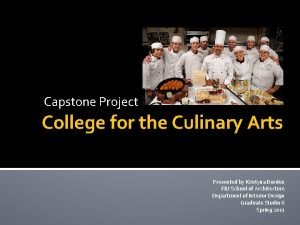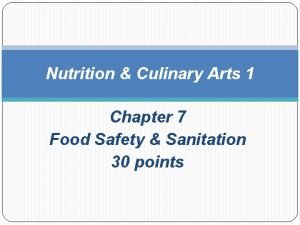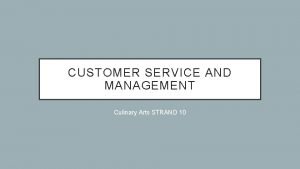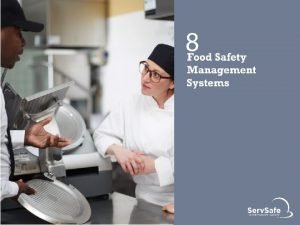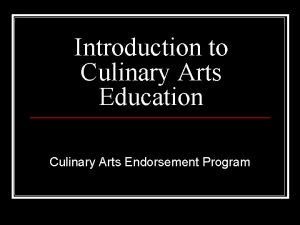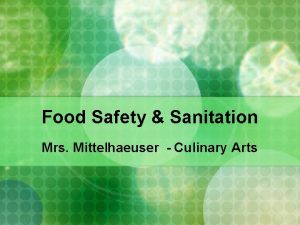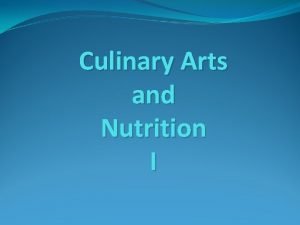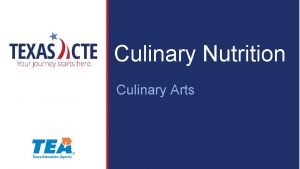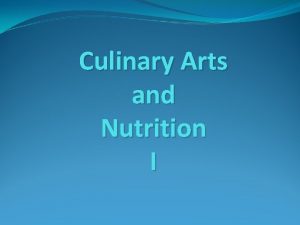Food Safety Notes Culinary Arts 1 Miss Harper











- Slides: 11

Food Safety Notes Culinary Arts 1 Miss Harper

• Hands should be washed with warm/hot water for at least 20 seconds • Wash your hands before handling food, after you use the restroom, whenever you think they are dirty or after cooking and whenever you switch from handling raw food to handling ready to eat food.

• You should wear bandaid and gloves when you have a cut on your hand(s). • Keep all surfaces clean (free of dirt and dust) and sanitized (free of germs and bacteria).

• To sanitize a work surface, you should use a solution of 1 teaspoon bleach per pint of water that is in a labeled spray bottle.

• Food borne illness is also called food poisoning. • Food borne illness results from bacteria contaminated foods that contain harmful microorganisms.

The conditions needed for optimal bacterial growth are: • • • Food Acidity Time Temperature Oxygen Moisture

• Contaminated food does not always look or taste bad. • Never consume food that may be contaminated. When in doubt, Throw It Out.

• The danger zone (where perishable food should not be kept) is from 40 to 140 degrees F.

• Ground beef, chicken, pork, and leftover food should be cooked to an internal temperature of 165 degrees F. • Use a thermometer to check internal temperature of meats.

• Keep hot foods above 140 degrees and cold foods below 40 degrees F to slow/stop the growth of bacteria. • Food can be safely thawed by using the defrost cycle on the microwave, running it under cold water or leaving it in the refrigerator.

• Once your hands are properly cleaned, don’t touch your face or body as you could recontaminate them. • Avoid stirring and tasting with the same spoon so food doesn’t become contaminated. • Keep long hair out of your face and the food so it doesn’t pose a safety or sanitation hazard.
 Lahc nursing
Lahc nursing Math in culinary arts
Math in culinary arts Culinary arts study guide
Culinary arts study guide Strand for culinary arts
Strand for culinary arts A charger is defined as culinary
A charger is defined as culinary Culinary nutrition definition
Culinary nutrition definition Culinary arts strand
Culinary arts strand What is the pass system in culinary
What is the pass system in culinary Creative arts grade 7 lesson plans term 3
Creative arts grade 7 lesson plans term 3 Food safety management systems servsafe chapter 8 notes
Food safety management systems servsafe chapter 8 notes Food safety food security
Food safety food security Health and safety in performing arts
Health and safety in performing arts



